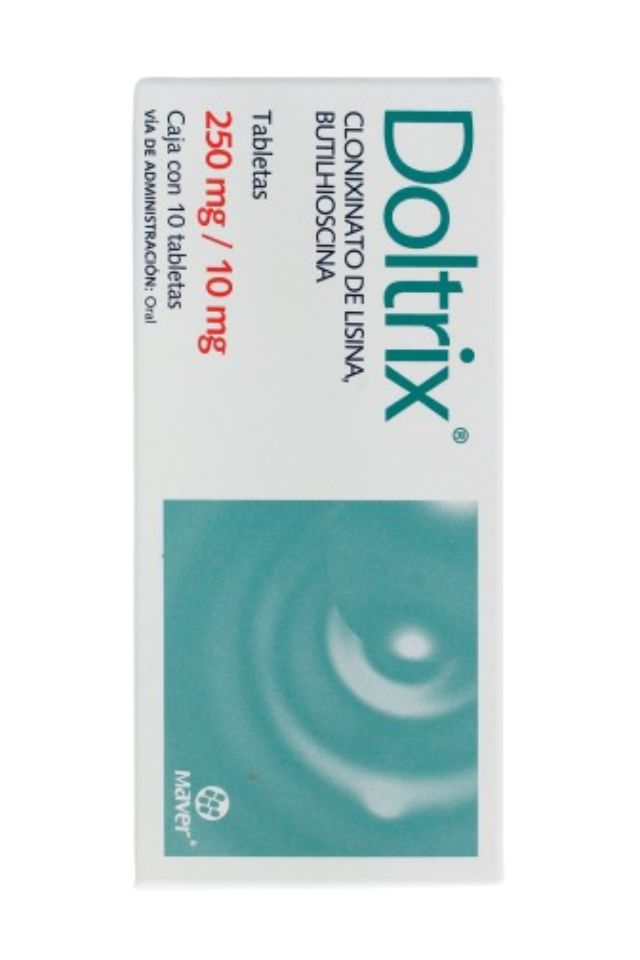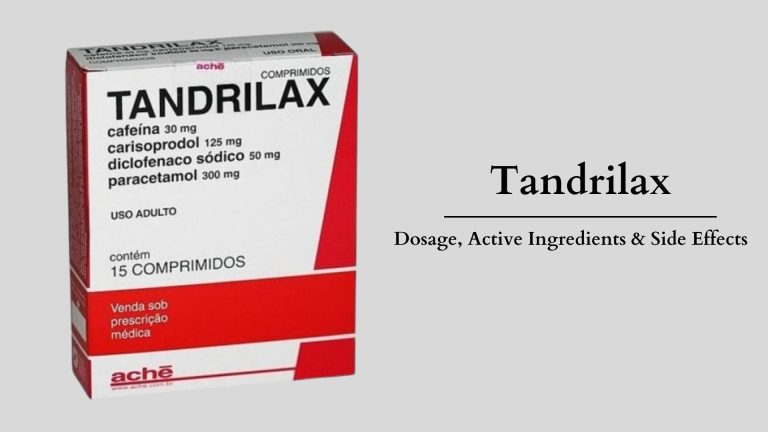Doltrix Dosage, Effects, Side Effects, Interactions, and More
Welcome to an in-depth exploration of Doltrix, a medication known for its pain relief properties. It is a combination of active ingredients including clonixin and lysine, is designed to provide relief from various types of pain, from muscle pain to more severe conditions like renal colic. This comprehensive article aims to shed light on the effects, side effects, dosage guidelines, and interactions to equip patients and healthcare providers with relevant information for optimal pain management. You can also check for Tendrilax here.

What Are the Primary Effects of Doltrix?
Doltrix operates as a potent pain reliever through its unique composition. The drug’s mechanism involves inhibiting enzymes in the body that are responsible for generating pain signals. This process not only reduces pain but also alleviates fever, making it a versatile medication for treating various conditions. Patients should be aware if the drug contains acetaminophen as part of its fever-reducing ingredients. Its efficacy in pain management is attributed to the deliberate combination of ingredients that it Ltd has curated, targeting the root cause of pain with precision.
Comparing Doltrix’s Effectiveness for Different Types of Pain
The effectiveness can vary depending on the type of pain a patient is experiencing. For instance, patients suffering from muscle pain may find immediate relief due to Doltrix’s muscle relaxant properties. However, it’s important to check if the medicine may contain acetaminophen to avoid overdose risk. Similarly, those dealing with the excruciating pain of renal colic may observe significant pain mitigation. Comparing its application across different pain types illustrates the versatility as a comprehensive pain management solution, making it a favored prescription among physicians.
Understanding the Role of Lysine in Enhancing Doltrix’s Pain Relief Properties
Lysine, an integral ingredient in it, plays a critical role in enhancing the drug’s efficacy. This essential amino acid is believed to aid in the absorption of the other active components, such as clonixin, ensuring that the medication acts swiftly and effectively. Patients should verify if it may contain this amino acid to ensure compatibility with their health profile. The inclusion of lysine exemplifies the thoughtful formulation behind it, aimed at maximizing pain relief benefits for patients suffering from various conditions.
Exploring the Side Effects of Doltrix
While this tablet is effective in pain relief, patients may experience side effects such as nausea, sweating, drowsiness, and constipation. These common side effects are typically mild and manageable with proper care and advice from a healthcare provider. However, patients should be informed about any warning signs of more serious side effects. Adjusting the dosage or timing of medication intake can mitigate these side effects, ensuring that the benefits of pain management outweigh the discomforts.
Rare But Serious Side Effects | What to Watch Out For?
On rare occasions, this tablet can lead to more severe side effects like difficulty urinating, rash, and vomiting. These symptoms, while uncommon, necessitate immediate medical attention. It is a warning sign that should not be ignored, especially if the symptoms might be related to interactions. It is crucial for patients to remain vigilant about any adverse reactions to Doltrix and report them to their healthcare provider promptly to avoid complications.
Long-Term Use of Doltrix (Potential Risks and Benefits)
Long-term use of any medication, including Doltrix, requires careful consideration of the potential risks and benefits. While Doltrix can offer sustained relief for chronic pain conditions, extended use might lead to tolerance or dependency in some cases. It’s essential to review the ingredient matches for this tablet to understand this risk better. Consulting regularly with a physician allows for monitoring and adjusting treatment plans to ensure that this tablet remains an effective component of pain management without adverse long-term effects. Additionally, any gov.uk advisories regarding drug use should be considered in these consultations.
Proper Dose for Optimal Pain Management?
The appropriate dosage of this tablet varies depending on the patient’s specific medical condition and severity of pain. Doctors often start with a lower dose, which can be adjusted based on the patient’s response to the medication. Accurate dosage calculation, as prescribed by a physician, is crucial for achieving the desired pain relief while minimizing the risk of side effects.
Adjusting Dosage (When and Why Your Physician Might Recommend It)
Adjustments to the dosage may be necessary over time, depending on the patient’s ongoing experience with the medication. Factors such as changes in the level of pain, potential side effects, or the development of tolerance can prompt a doctor to modify the prescribed dose. Close communication with healthcare professionals ensures that such adjustments are made safely and effectively.
Dosage Precautions (What Every Patient Should Know)
When taking this tablet , patients should adhere to specific dosage precautions to prevent adverse effects. This warning is especially pertinent if it contains acetaminophen, to prevent liver damage. This includes not exceeding the recommended dose, avoiding alcohol, and being cautious of potential interactions with other medications. Patients should also be wary of Doltrix’s ingredient matches for any hidden acetaminophen. Patients should always consult their physician or pharmacist before combining it with other treatments to safeguard against unintended interactions.
Interactions of Doltrix with Other Medications
Doltrix can interact with various common medications, altering its effectiveness or increasing the risk of side effects. Patients should review gov.uk for any warnings about these potential interactions. For instance, combining it with antihistamines or other pain supplements may lead to increased drowsiness. Utilizing resources like government databases or consulting healthcare providers can help identify potential interaction risks and manage them adeptly.
How to Safely Combine Doltrix with Other Pain Supplements?k
To safely use this tablet alongside other pain supplements, patients should always seek guidance from their healthcare provider. Additionally, consulting gov.uk for any official warning related to drug interactions may be beneficial. Coordination between doctors and pharmacists ensures that all aspects of a patient’s medication regimen are considered, minimizing the risk of harmful interactions and maximizing pain management outcomes.
Consulting with Your Healthcare Provider About Doltrix Interactions
Engaging in open and informed discussions with healthcare providers about the use of it and potential interactions is essential. Physicians can offer advice on how to effectively integrate it into a patient’s treatment plan, taking into account other medications and the patient’s overall health condition. This collaborative approach ensures that Doltrix is used safely and effectively for optimal pain management.
Use of Doltrix with Specific Medical Conditions
Patients with specific pre-existing health conditions must exercise caution when taking Doltrix. This drug may contain ingredients that necessitate such caution. For example, individuals with liver or kidney diseases may require adjusted dosages or alternative pain management solutions. Understanding the impact of Doltrix on such conditions is crucial for ensuring patient safety and the effectiveness of treatment. Healthcare officers should be consulted to provide advice and guidance tailored to each patient’s condition.
When to Avoid Doltrix (Medical Conditions That May Warrant Caution?)
Certain medical conditions, such as pregnancy, might necessitate avoiding Doltrix altogether. The drug’s effects on the fetus are not well-documented, thus prescribing it during pregnancy is approached with caution. Similarly, patients scheduled for surgery or those with a history of allergic reactions to similar medications should consult their doctor before using Doltrix.
Engaging Your Physician in Decisions About Doltrix Use for Chronic Pain
For patients dealing with chronic pain, actively engaging with their physician about the use of Doltrix is vital. Discussions should include any concerns related to drug interactions or dependency. This involves discussing the nature of the pain, the effectiveness of Doltrix, and any concerns regarding long-term use. Open dialogue ensures that decisions regarding Doltrix use are well-informed and tailored to the patient’s needs, optimizing pain management strategies and promoting overall well-being.
FAQs
The main ingredients in Doltrix are paracetamol, quinine, amantadine, and phenothiazine.
Yes, it is important to note that Doltrix should not be taken by individuals with severe hypertension, peripheral vascular disease, or those who are sensitive to any of its ingredients.
Doltrix should not be used as a substitute for medications prescribed by a doctor. Always consult your healthcare provider before starting or stopping any medication.
Common side effects of Doltrix may include decreased sweating, visual disturbances, and breast tenderness.
The dosage of Doltrix should be determined by a healthcare provider based on your individual medical condition and needs.
Doltrix may be prescribed by a doctor to relieve postpartum pain, but only under medical supervision.
Doltrix may interact with certain medications like antivirals, so it is important to inform your doctor of all medications you are taking before starting Doltrix.






